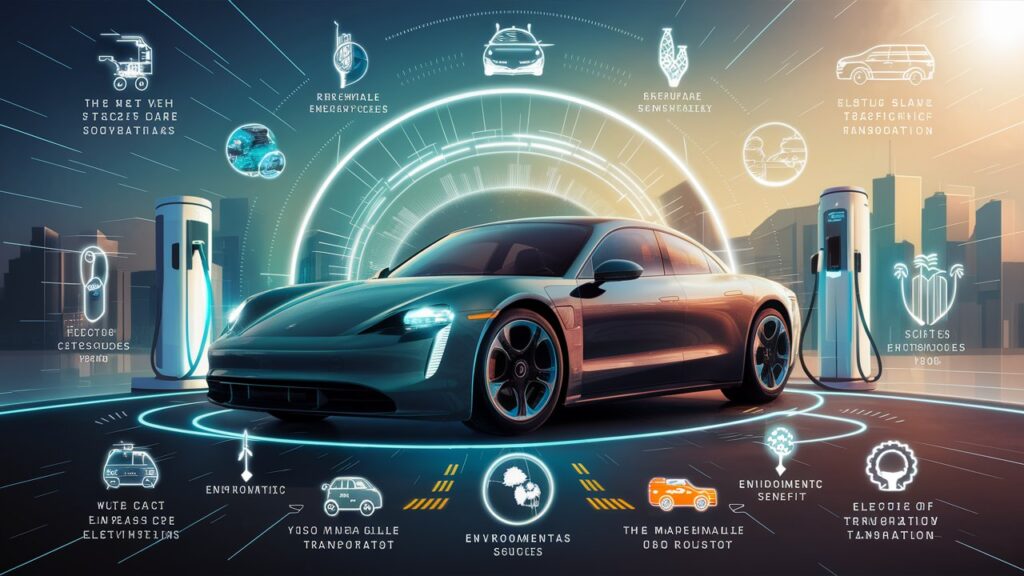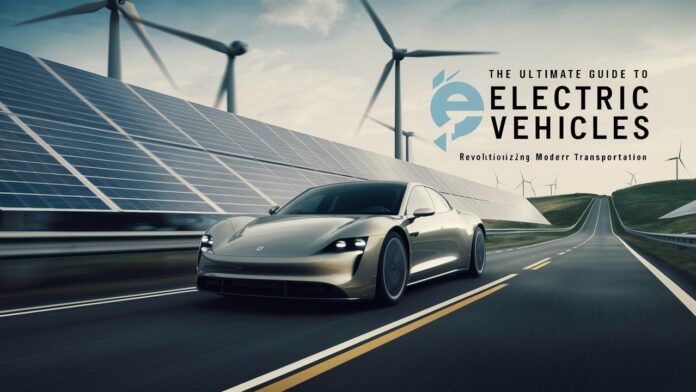Introduction
The automotive landscape is undergoing a seismic shift with the rise of electric vehicles (EVs). As climate concerns intensify and technology advances, EVs have evolved from niche curiosities to mainstream transportation solutions. This guide dives deep into every facet of electric vehicles—from environmental impact and battery technology to charging infrastructure and ownership costs. Whether you’re a prospective buyer, an eco-conscious driver, or a tech enthusiast, understanding these innovations is crucial for navigating the future of mobility. We’ll explore how EVs work, their tangible benefits, practical challenges, and what lies ahead in this rapidly evolving industry.
1. Understanding Electric Vehicle Mechanics and Technology
Electric vehicles operate on fundamentally different principles than internal combustion engines. Instead of gasoline, EVs use electricity stored in high-capacity lithium-ion batteries to power an electric motor. This eliminates exhaust emissions and drastically reduces moving parts—leading to fewer mechanical failures. Regenerative braking systems capture kinetic energy during deceleration, converting it back into stored electricity to extend range. Battery management systems (BMS) continuously monitor cell temperature, voltage, and health to optimize performance and safety. Unlike traditional engines requiring oil changes or exhaust maintenance, EVs rely on software updates and battery diagnostics, marking a paradigm shift toward “digital mechanics.”
2. Environmental Impact: Beyond Zero Emissions
While EVs produce no tailpipe emissions, their true environmental footprint extends beyond the road. Charging an EV with renewable energy (solar/wind) slashes lifecycle carbon emissions by up to 70% compared to fossil fuels. However, battery manufacturing involves resource extraction—like lithium and cobalt—raising concerns about mining ethics and ecological disruption. Fortunately, recycling initiatives are gaining traction; companies like Redwood Materials recover 95% of battery materials for reuse. Additionally, EVs reduce urban noise pollution and decrease reliance on oil, mitigating risks of spills and geopolitical conflicts. As grids worldwide transition to renewables, EVs will become unequivocally cleaner.
3. Charging Infrastructure: Home, Public, and Ultra-Fast Networks
Charging accessibility remains pivotal for EV adoption. Home charging (Level 1/2) offers convenience using standard outlets or 240V installations, replenishing overnight. Public networks fill gaps for urban dwellers and long-distance travel. Level 2 chargers, common at malls or workplaces, add 20-30 miles per hour. DC Fast Chargers (Level 3), like Tesla Superchargers or Electrify America stations, deliver 80% charge in 20–30 minutes but require specialized hardware. Governments and private firms are investing heavily in expanding networks—aiming for 500,000 U.S. public ports by 2030. Challenges persist, including rural coverage gaps and connector standardization, yet innovations like wireless charging roads promise seamless future integration.
4. Battery Longevity, Replacement Costs, and Recycling Solutions
EV batteries typically last 10–15 years before degrading to 70–80% capacity. Factors like extreme temperatures, frequent fast charging, or deep discharges accelerate wear. Modern thermal management systems mitigate this by maintaining optimal operating conditions. Replacement costs—historically a deterrent—are falling rapidly; a 40kWh battery now averages $6,000–$10,000, down 60% from 2015. Second-life applications repurpose used batteries for grid storage, extending utility before recycling. Hydrometallurgical processes now recover lithium, nickel, and cobalt with 90% efficiency, creating a circular economy. Manufacturers like Tesla and Nissan offer warranty programs (8 years/100k miles), bolstering consumer confidence.
5. Total Ownership Cost Analysis: Savings Beyond the Sticker Price
EVs command higher upfront prices but deliver long-term savings. Federal tax credits (up to $7,500) and state incentives reduce initial costs. Electricity costs average 3–5 cents per mile versus 10–15 cents for gasoline—saving $800–$1,200 annually. Maintenance is cheaper: no oil changes, spark plugs, or timing belts. Brake pads last longer due to regenerative braking, and electric motors have fewer failure points. Insurance premiums, once higher, are normalizing as repair data accumulates. Resale values remain strong for popular models, though battery health reports now influence used-EV pricing. Over a typical 7-year ownership, EVs often undercut comparable gas cars by $10,000+ in total expenses.

6. Future Innovations: Solid-State Batteries and Autonomous Integration
The next EV revolution hinges on solid-state batteries, replacing liquid electrolytes with solid conductors. These promise 2–3x higher energy density, 10-minute charging, and reduced fire risks—Toyota plans commercialization by 2027. Autonomous driving synergizes with EVs; unified software platforms (e.g., Tesla’s FSD) optimize energy use via predictive routing. Vehicle-to-Grid (V2G) tech will let EVs feed surplus power back to homes or grids during peak demand, turning cars into revenue-generating assets. AI-driven battery R&D accelerates material discovery, while startups explore sodium-ion alternatives to reduce lithium dependency. These advancements will shrink charging times, boost ranges beyond 600 miles, and democratize access globally.
7. Debunking Common EV Myths: Range Anxiety and Grid Overload
Persistent myths hinder EV adoption. “Range anxiety” fades as 2024 models exceed 300 miles per charge—surpassing most daily needs. Public chargers now outnumber gas stations in key markets like California. Concerns about grid collapse are overstated; EVs accounted for 0.4% of U.S. electricity demand in 2023. Smart charging shifts loads to off-peak hours, and bidirectional charging could stabilize grids. Fire risks? EVs are statistically less likely to ignite than gas cars. Cold weather reduces range by 15–30%, but heat pumps and preconditioning mitigate losses. Education and firsthand experience dispel these myths faster than ever.
Conclusion
Electric vehicles are no longer a futuristic concept—they’re a practical, economical, and sustainable choice today. With advancements in battery tech, expanding infrastructure, and compelling ownership economics, EVs offer a viable path toward decarbonizing transportation. While challenges like mining ethics and grid upgrades require collaborative solutions, the momentum is irreversible. As automakers phase out combustion engines by 2035, embracing EVs isn’t just eco-conscious; it’s a strategic investment in the future. By understanding the intricacies explored in this guide, consumers can confidently join the electric revolution.
Frequently Asked Questions (FAQs)
Q1: How long does charging an EV take?
Level 1 (120V outlet): 20–40 hours for a full charge.
Level 2 (240V home/public): 4–8 hours.
DC Fast Charger: 20–30 minutes for 80% charge.
Q2: Are EVs truly better for the environment if electricity comes from coal?
Even on coal-heavy grids, EVs emit 25–35% less CO₂ over their lifecycle due to efficient electric motors. As renewables expand, this advantage grows exponentially.
Q3: What happens to old EV batteries?
Most enter “second-life” applications (e.g., storing solar energy) before recycling. Modern methods recover >90% of materials for new batteries.
Q4: Can EVs handle long road trips?
Yes. Apps like PlugShare plan routes around fast-charging corridors. New models add 200+ miles in under 20 minutes.
Q5: Do EVs require special maintenance?
Routine checks focus on tires, brakes (less frequently used), coolant, and software updates—no oil changes or exhaust system repairs.
Q6: How cold or hot weather affects EV range?
Extreme cold can reduce range by 30%, mitigated by preheating while plugged in. Heat impacts range less (10–15%) but stresses batteries long-term.
Q7: Are home chargers expensive to install?
Level 2 chargers cost $600–$1,200, plus installation. Many utilities offer rebates, reducing out-of-pocket expenses to $300–$800.
Q8: Will EV batteries degrade if I fast-charge often?
Frequent DC fast charging can accelerate degradation slightly. Limiting it to 20–80% state of charge preserves longevity.
Explore more insights at FAQVehicle.com—your hub for expert EV analysis and sustainable mobility trends!


